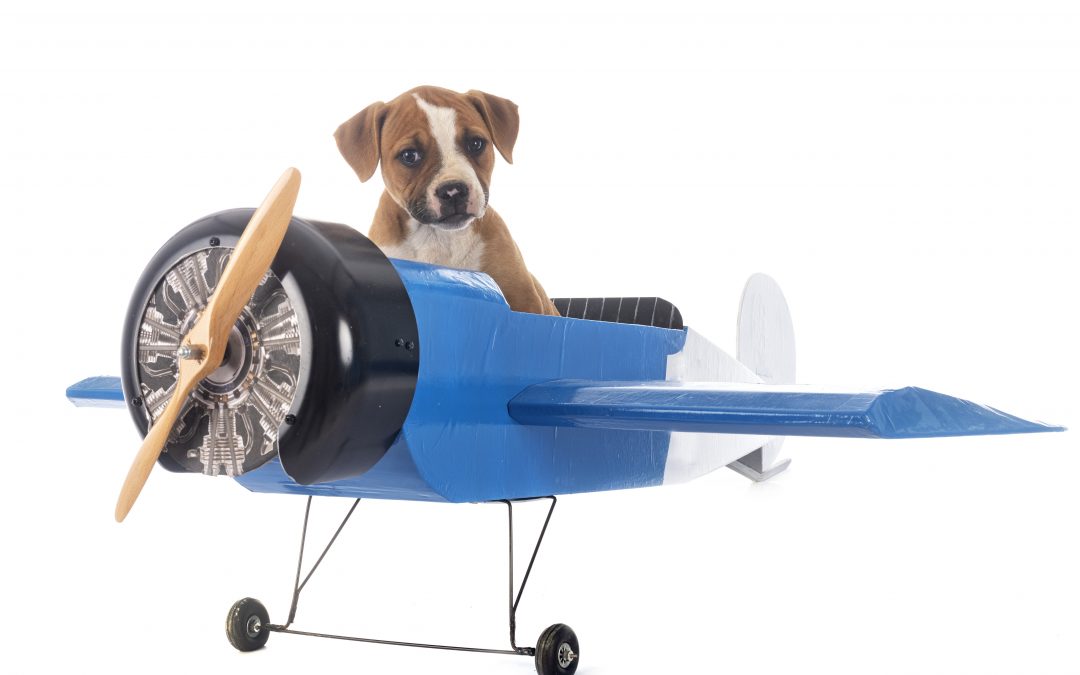Determine if your airline allows animals in the cabin or under the passenger seat. If it doesn’t, consider another form of travel or leave your pet behind with someone who can look after him. The stress of being alone inside a baggage compartment is very hard on pets.
Purchase a well ventilated crate and make sure that it has a security latch. Make sure the bottom of your crate is leak proof.
Do not leave security blankets, clothing, or other items in the crate that allow your pet to bury its nose.
Check if your airline allows your particular breed of dog travel during your selected travel dates. There are policies that may prevent your breed air travel during certain months.

Avoid flying during holidays or weekends. Cabin space for pets is limited and you’ll be competing with other pet owners for the same space.
Adhere to size restrictions. Generally, pets must be at least 8 weeks old, have a total weight limit of 20 pounds, and fit inside a carrier that measures no more than 17” long by 12.5” wide and be less than 8” high.
Bring a leash to use while at the security check point. You will be required to remove your pet from its crate so that the crate can be placed in the X-ray tunnel.
Avoid layovers as these would extend travel time and create added stress for your pet.
Take extra precautions if traveling with short-nosed breeds especially if overweight. These pets are more prone to respiratory problems and are at higher risk of death in the cargo area of a plane. The U.S. Department of Transportation reported in 2010 that 50% of the deaths that occurred over a five year period were with short-nosed dog breeds.
Get your pet used to the travel crate by doing practice runs that include taking short drives with your cat or dog in its crate.
Avoid tranquilizing your pet as it increases the risk of injury and health complications.
Check vaccination laws for your destination or your pet may be rejected or put under quarantine. Check APHIS site for travel laws.

Do not feed your pet several hours before your scheduled flight. Consult with your veterinarian for recommendations given your pet’s breed, age, and medical history.
Use a clip on container for extra water during travel.
Get a health certificate signed by your vet showing your pet has been cleared for travel.
Bring your dog’s medical records with you especially inoculation records and the required proof-of-health forms.
Mark your dog’s crate with your information clearly so that there is no delay in reuniting you after landing. Include your name and address along with the words “LIVE ANIMAL” on the sides. Add arrows to the sides that point upwards to denote right side up.
Become acquainted with your airport’s pet relief area while waiting to board.


